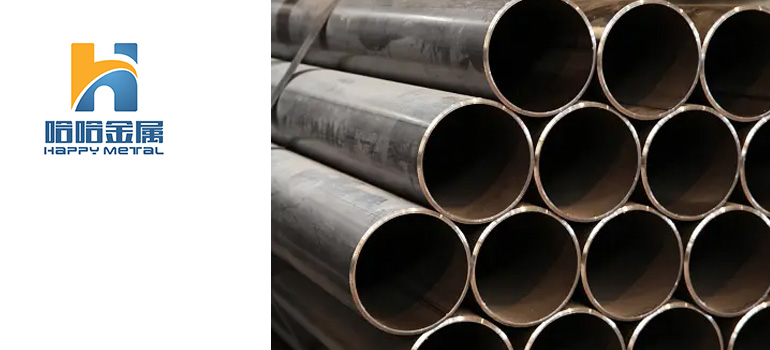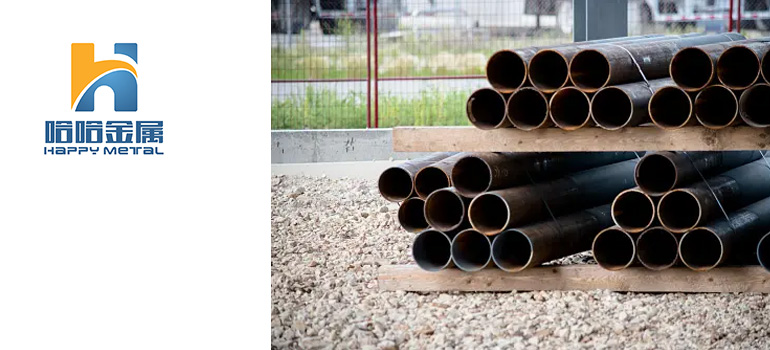Summary:
Demystifying Carbon Steel Pipe Specifications: Your Comprehensive Guide
What are Carbon Steel Pipe Specifications
Importance of Understanding Carbon Steel Pipe Specifications
Key Components of Carbon Steel Pipe Specifications
Detailed Analysis of Carbon Steel Pipe Specifications
Comparison of Different Carbon Steel Pipe Specifications
Carbon steel pipes are foundational components in various industries, known for their strength, durability, and versatility. Understanding carbon steel pipe specifications is essential for engineers, manufacturers, and anyone involved in construction or infrastructure projects. These specifications outline crucial details about the material composition, dimensions, and performance standards that dictate how these pipes are manufactured, tested, and utilized.
What are Carbon Steel Pipe Specifications?
Carbon steel pipe specifications refer to detailed standards and requirements that govern the manufacturing, dimensions, quality, and performance characteristics of carbon steel pipes used in various industries such as construction, oil and gas, manufacturing, and infrastructure projects. These specifications are crucial for ensuring the pipes meet specific standards for safety, reliability, and functionality.
Importance of Understanding Carbon Steel Pipe Specifications
Understanding carbon steel pipe specifications is crucial for several reasons, especially in industries where reliability, safety, and performance are paramount. Here are key reasons why it’s important:
Safety and Compliance: Carbon steel pipe specifications ensure that pipes meet stringent safety standards and regulatory requirements. They outline the parameters for material composition, dimensions, and performance characteristics that pipes must adhere to. This compliance is essential to prevent failures, leaks, or other hazards that could compromise safety in industrial settings.
Material Selection: Different grades of carbon steel are suited for various applications based on their mechanical properties, corrosion resistance, and temperature limits. Understanding specifications helps in selecting the appropriate grade of carbon steel pipe that can withstand specific environmental conditions, pressures, and temperatures without premature deterioration or failure.
Compatibility and Interchangeability: Specifications provide standardized dimensions and sizes (NPS and schedules) for carbon steel pipes. This uniformity ensures compatibility and interchangeability of pipes and fittings from different manufacturers, facilitating easier installation, repairs, and maintenance of piping systems.
Reliability and Performance: Adhering to specifications ensures that carbon steel pipes perform reliably under expected operating conditions. Specifications define parameters such as pressure ratings, temperature limits, and corrosion resistance, which are critical for ensuring the long-term performance and integrity of piping systems.
Cost-effectiveness: Properly selected and specified carbon steel pipes can offer cost-effective solutions compared to other materials. Understanding specifications helps in optimizing material selection and design to meet project requirements while controlling costs associated with procurement, installation, and maintenance.
Quality Assurance: Specifications include requirements for manufacturing processes, testing procedures, and quality control measures. By understanding and adhering to these specifications, stakeholders can ensure that carbon steel pipes meet desired quality standards and performance expectations, reducing the risk of defects or non-compliance during project execution.
Project Success: Comprehensive knowledge of carbon steel pipe specifications enables engineers, designers, and project managers to make informed decisions throughout the project lifecycle. It helps in planning, designing, procuring, and installing piping systems that meet project objectives, timelines, and budget constraints effectively.
In summary, understanding carbon steel pipe specifications is essential for ensuring safety, compliance, reliability, and cost-effectiveness in industrial applications. It forms the foundation for selecting appropriate materials, designing robust piping systems, and achieving successful project outcomes.
Key Components of Carbon Steel Pipe Specifications

Carbon steel pipe specifications encompass several key components that define the standards, requirements, and parameters for manufacturing, testing, and utilizing carbon steel pipes in various industrial applications. Here are the key components of carbon steel pipe specifications:
Material Composition and Grades:
Carbon Content: Specifies the carbon percentage in the steel, which influences its strength and hardness.
Alloying Elements: Includes elements like manganese, sulfur, phosphorus, and silicon, which affect the steel’s properties such as toughness, ductility, and corrosion resistance.
Grade Designation: Different grades (e.g., ASTM A53, ASTM A106, API 5L) based on carbon content and mechanical properties to suit specific applications and operational conditions.
Dimensions and Sizes:
Nominal Pipe Size (NPS): Standardized size designation based on the approximate inside diameter of the pipe.
Wall Thickness (Schedule): Specifies the thickness of the pipe walls, categorized into schedules (e.g., Schedule 40, Schedule 80) indicating the pressure capacity and applications suitability.
Manufacturing Standards and Processes:
ASTM Standards: Guidelines from the American Society for Testing and Materials that define material specifications, manufacturing processes, and testing procedures.
API Standards: Specifications from the American Petroleum Institute, particularly for pipes used in oil and gas industries, covering dimensions, grades, and manufacturing requirements.
ANSI Standards: Standards from the American National Standards Institute that ensure uniformity in pipe dimensions, fittings, and connections.
Testing and Inspection Requirements:
Mechanical Testing: Includes tests for tensile strength, yield strength, and elongation to verify mechanical properties.
Chemical Analysis: Determines the composition of the steel to ensure it meets specified requirements.
Non-Destructive Testing (NDT): Methods such as ultrasonic testing (UT) and radiographic testing (RT) used to detect flaws or defects without damaging the pipe.
Dimensional Inspection: Ensures that pipes meet specified dimensional tolerances and requirements.
Performance Criteria:
Pressure Ratings: Specifies the maximum pressure that the pipe can safely withstand under operating conditions.
Temperature Limits: Defines the temperature range within which the pipe material can maintain its mechanical properties and structural integrity.
Corrosion Resistance: Specifies requirements for corrosion-resistant coatings or materials suitable for environments prone to corrosion.
Marking and Identification:
Manufacturer’s Name or Logo: Identifies the manufacturer responsible for the pipe.
Grade and Material: Indicates the specific grade of carbon steel and material specifications.
Size and Schedule: Clearly marked to indicate the nominal size and schedule of the pipe.
Understanding these key components of carbon steel pipe specifications is essential for engineers, manufacturers, and stakeholders involved in the selection, design, and installation of piping systems. Adhering to these specifications ensures that pipes meet required standards for safety, reliability, and performance in diverse industrial applications.
Detailed Analysis of Carbon Steel Pipe Specifications
A detailed analysis of carbon steel pipe specifications involves examining various aspects that govern the manufacturing, quality, and performance standards of these essential components in industrial infrastructure. Here’s a comprehensive breakdown:
Manufacturing Processes and Standards
Manufacturing Processes
Seamless vs. Welded: Discusses the differences between seamless and welded carbon steel pipes, including manufacturing methods, advantages, and applications.
Cold Drawn vs. Hot Finished: Explains the distinctions between cold drawn and hot finished processes, highlighting how they impact the properties and characteristics of the pipes.
Heat Treatment: Describes heat treatment processes such as normalizing, quenching, and tempering, and their effects on the mechanical properties and microstructure of carbon steel pipes.
Standards and Specifications
ASTM Standards: Covers commonly used ASTM specifications for carbon steel pipes, such as ASTM A53, ASTM A106, ASTM A333, detailing their requirements for material composition, mechanical properties, and testing.
API Standards: Focuses on API specifications like API 5L for line pipes used in oil and gas industry applications, including requirements for dimensions, grades, and manufacturing processes.
International Standards: Discusses international standards (e.g., EN, ISO) that may apply to carbon steel pipes, ensuring global compatibility and compliance with regulatory requirements.
Testing and Inspection Protocols
Mechanical Testing
Tensile Strength: Explains the test procedure and significance of measuring the maximum stress a material can withstand while being stretched or pulled.
Yield Strength: Discusses the yield point, which indicates the stress level at which a material begins to deform permanently.
Impact Testing: Covers impact tests to evaluate the toughness and resistance of carbon steel pipes to sudden shock or loading.
Non-Destructive Testing (NDT)
Ultrasonic Testing (UT): Details the use of high-frequency sound waves to detect internal flaws or defects in carbon steel pipes.
Radiographic Testing (RT): Explains the technique of using X-rays or gamma rays to inspect welds and detect imperfections in the pipes.
Magnetic Particle Testing (MT) and Dye Penetrant Testing (PT): Briefly discusses these methods for detecting surface and near-surface flaws in carbon steel pipes.
Common Applications and Industries
Oil and Gas Industry
Pipeline Transportation: Discusses the use of carbon steel pipes for transporting oil, natural gas, and other fluids over long distances.
Downstream Applications: Covers refinery and petrochemical applications where carbon steel pipes are used for various processes and utilities.
Construction and Infrastructure
Building and Construction: Highlights the use of carbon steel pipes in structural applications such as building frameworks, bridges, and structural supports.
Water and Sewage Systems: Discusses the role of carbon steel pipes in water supply and drainage systems due to their durability and corrosion resistance.
A detailed analysis of carbon steel pipe specifications ensures that engineers, manufacturers, and stakeholders have a comprehensive understanding of the material, manufacturing processes, testing procedures, and applications. This knowledge is crucial for selecting, designing, and installing carbon steel pipes that meet performance requirements, regulatory standards, and operational needs across various industries.
Comparison of Different Carbon Steel Pipe Specifications
Comparing different carbon steel pipe specifications involves evaluating various standards, grades, and requirements set by organizations like ASTM, API, and others. Here’s a structured comparison focusing on key aspects:
ASTM vs. API Standards
ASTM Standards:
Cover a wide range of industries and applications beyond oil and gas, including construction, plumbing, and general engineering.
Provide detailed specifications for material composition, mechanical properties, dimensions, and testing procedures.
API Standards:
Specifically tailored for the oil and gas industry, covering line pipes used in transportation of oil, natural gas, and other fluids.
Emphasize requirements for high-strength, corrosion-resistant materials suitable for harsh environmental conditions.
Material Grades and Types
ASTM:
Offers diverse material grades such as ASTM A53, ASTM A106, ASTM A333, differentiated by carbon content and mechanical properties.
Includes specifications for both seamless and welded pipes, catering to various structural and industrial applications.
API:
Focuses on specific grades like API 5L (e.g., API 5L Grade B, X42, X52), designed for high-pressure and high-temperature pipelines.
Specifies stringent requirements for steel chemistry, mechanical properties, and non-destructive testing (NDT) to ensure pipeline integrity.
ANSI vs. ASME Standards
ANSI Standards:
Developed and maintained by the American National Standards Institute, covering dimensions, tolerances, and materials for pipes, fittings, and flanges.
Ensure consistency and compatibility in pipe systems across different manufacturers and applications.
ASME Standards:
Managed by the American Society of Mechanical Engineers, focusing on design, construction, and inspection of pressure vessels and piping systems.
Include guidelines for materials, welding procedures, and quality control to ensure safety and reliability in industrial piping applications.
Comparison Factors
Dimensional Tolerances:
Both ASTM and API standards specify dimensional tolerances for pipe dimensions such as outer diameter, wall thickness, and length to ensure compatibility and fitment in piping systems.
Testing and Inspection Requirements:
ASTM and API standards mandate rigorous testing protocols including mechanical tests (tensile, yield strength), chemical analysis, and non-destructive testing (e.g., ultrasonic, radiographic) to verify material properties and integrity.
Application Specificity:
API standards are more focused on applications in the oil and gas industry, emphasizing requirements for pipeline construction, transportation, and reliability under extreme conditions.
ASTM standards cater to a broader range of applications across industries, offering flexibility in material selection and design considerations.
Comparing different carbon steel pipe specifications such as ASTM vs. API and ANSI vs. ASME helps stakeholders in selecting the most suitable standards based on specific project requirements, industry regulations, and performance expectations. Understanding these differences ensures compliance, reliability, and optimal performance of carbon steel pipes in diverse industrial applications.




